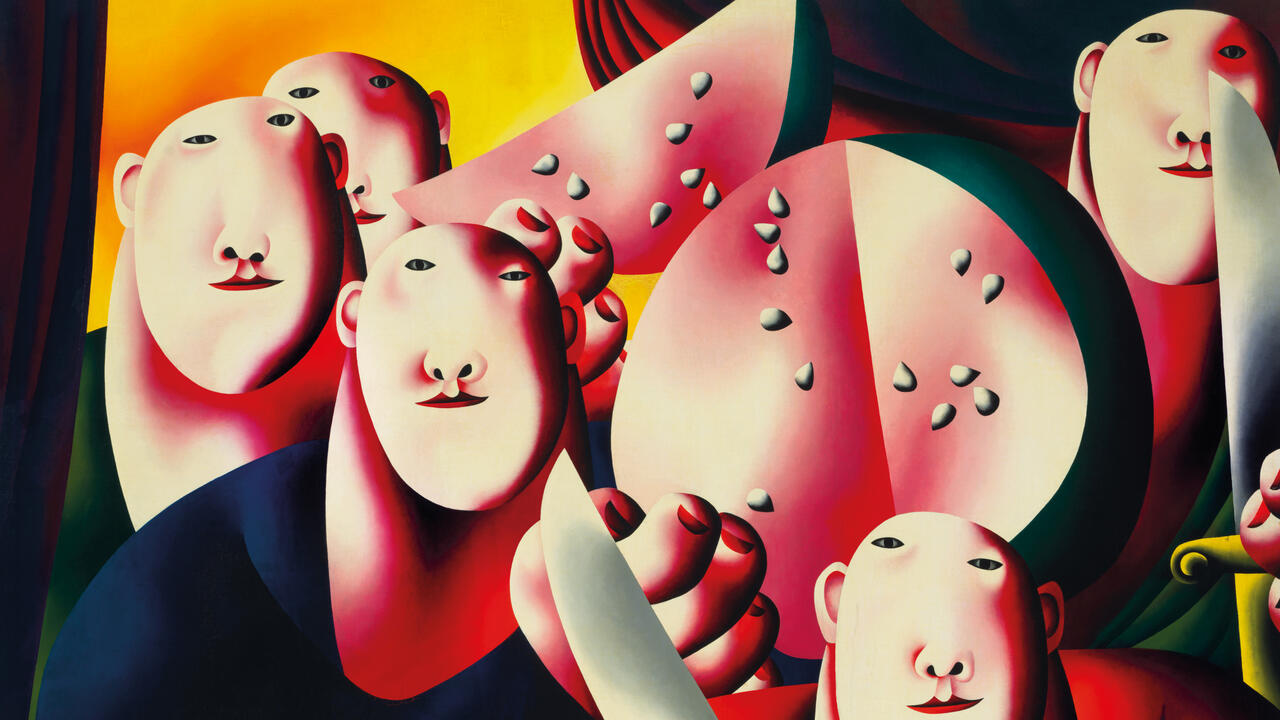GES-2 Is Moscow’s Newest Museum (Just Don’t Call It That)
Billed as an update of the Soviet-era ‘House of Culture’, Andrew Pasquier visits the Russian capital's recently opened cultural hub
Billed as an update of the Soviet-era ‘House of Culture’, Andrew Pasquier visits the Russian capital's recently opened cultural hub

‘You need a good client and a good story,’ explained a slightly grainy Renzo Piano, appearing via Zoom from Paris on a flatscreen monitor in the vast white expanse of GES-2 House of Culture. With Moscow’s latest cultural hub, which opened on 4 December, the legendary architect seemed to have had the good fortune to score both: an appealing update of the Soviet ‘house of culture’ concept and a billionaire backer with Kremlin connections. The hulking power plant on the banks of the Moskva River (since gutted, painted white and packed with an impressive, light-filled array of galleries, classrooms, studios and performance spaces) is destined to be a premiere hub of Russian cultural life – just don’t call it a museum, as I was reminded consistently at last weekend’s launch festivities.

On opening day, V-A-C Foundation co-founder and director Teresa Mavica vigorously insisted more than once to journalists that GES-2 was ‘a house of culture open to everyone’, which included President Vladimir Putin himself, who had stopped by to bless the project earlier that week. Yet Mavica was walking a tightrope, fielding probing questions about funding and artistic freedom with a smile and a Panglossian attitude that GES-2 – which is bankrolled by Leonid Mikhelson, CEO of Russian gas company Novatek – would be a free space for cultural reflection while somehow evading politics. ‘Politics is thinking about today, and we here are for thinking about the future.’
Despite this assertion, GES-2’s inaugural programme looks first to the past, drafting Reykjavik-based artist Ragnar Kjartansson to stage an unlikely reshooting of the US soap opera Santa Barbara (1984–93). While the NBC drama about the private lives of well-heeled Californians achieved only moderate success during its original run, the Russian dubbed version became a cultural sensation with a post-Soviet, pre-Putin generation keen for aspirational melodrama from the idyllic beachfront of American capitalism. One measure of the show’s continued influence on the Russian imagination is the common exclamation in response to excessively dramatic situations: ‘This is some kind of Santa Barbara!’ This tidbit was repeated by Kjartansson, Mavica and every piece of promotional literature about the show as if to stamp out any doubt among unknowing foreigners (like myself) that the B-ratings soap is indeed a phenomenon worthy of a museum opening.

The restaging, billed as ‘a living sculpture’, sees a Russian cast and crew produce 98 episodes of Santa Barbara in exposed film sets and editing stations spread across the centre’s cavernous nave. Watching cut after cut of a soap re-enactment is hardly riveting and, on the first day of the performance, the screen runner implored the dolled-up cast to deliver ‘more chaos!’ Yet, the spectacle of soap operatics naturally fits Kjartansson’s style of durational performance, which often teases out emotions through repeated engagement, wrapping beauty with a hint of schmaltz. As Kjartansson added at a panel discussion, titled ‘Why Santa Barbara?’, the fact that navel-gazing domestic dramas of well-to-do Californians spoke to audiences halfway around the globe is a testament to the genre’s knack for constituting an ‘emotional mythology’ – a human face for American capitalism and Russian longing that ‘through repetition becomes sculptural’.

GES-2’s opening season is titled ‘How Not To Be Colonized?’, a surprisingly political framing for a supposedly apolitical institution. Given this, it is somewhat ironic that ‘To Moscow! To Moscow! To Moscow!’ – the companion exhibition Kjartansson co-curated with his partner Ingibjörg Sigurjónsdóttir in lieu of a retrospective – consisted mostly of friends and artistic collaborators from Iceland. Asked about the home team selection, Sigurjónsdóttir joked that the V-A-C Foundation just ‘didn’t know how provincial he is’. Yet, Kjartansson’s lifelong enthusiasm for Russian culture (a lovefest recalled in talks across the opening weekend), plus his populist sensibilities made Santa Barbara exactly the ‘strange mirror’ the foundation needed to light-heartedly broach touchy themes of Russian identity-formation. Kjartansson, as Mavica put it, was the right artist ‘to help us disclose and break the clichés’ since his storytelling work is rife with them. Whether by looking to the future, or to a foreign perspective, one way V-A-C can engage with a censorious reality runs via these very attempts at temporal and cultural triangulation.

GES-2 exhibits many of the usual trappings of a major art institution – questionable funding, opaque institutional structures – but the V-A-C Foundation aims for the House of Culture to be something more, starting with Piano’s airy ‘public square’ design that invites the sidewalk ballet within. Juxtaposed with the walled citadel of state power across the river, however, it remains to be seen just how open this space can really be. But with Russian troops massing at the Ukrainian border and the US government threatening punishing sanctions, the institution’s restaging of Santa Barbara is, at the very least, a welcome geopolitical salve – a living sculpture to our daily dramas and common aspirations, politics aside.
Ragnar Kjartansson's Santa Barbara a living sculpture is on view at GES-2 until 13 March 2022.
Main image: Ragnar Kjartansson, Santa Barbara - A Living Sculpture, 2021, exhibition view, GES-2 House of Culture, Moscow; photograph: Mikhail Grebenshchikov






















